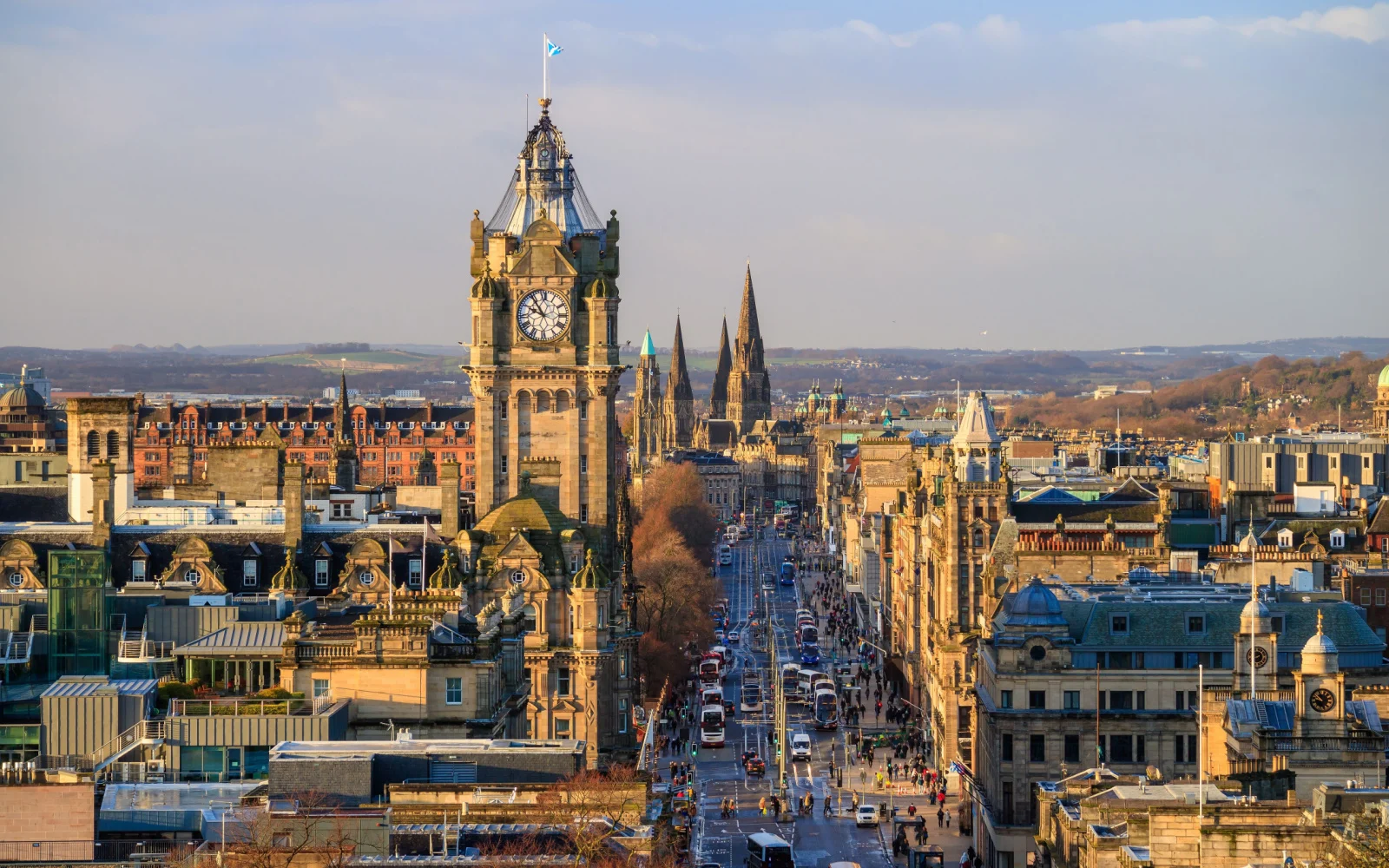The country of Scotland, which is part of the United Kingdom, is a spectacular travel destination. It receives about 3.2 million international visitors each year, and many more from other parts of the U.K.
Most visitors to Scotland start their exploration at Edinburgh, the moody capital, with its royal palaces open for public visits, iconic architecture, and famous festivals such as the Edinburgh Fringe.
The Scottish Highlands are the most famous region of Scotland, containing world-famous landmarks such as Loch Ness (no monster sighting guaranteed) and stunning scenery.
Exploring Scotland’s unique culture is another draw of visiting the region. You can taste whiskey, attend the Highland Games featuring traditional sports, and check out the vibrant modern culture of cities such as Glasgow.
The country has a lot to offer visitors, so it is tempting to book your trip immediately.
However, before visiting any new destination, it’s important to research if you will be safe visiting. Keep reading this detailed travel guide to find out everything you need to know about visiting Scotland safely.
Is Scotland Safe to Visit in 2024?
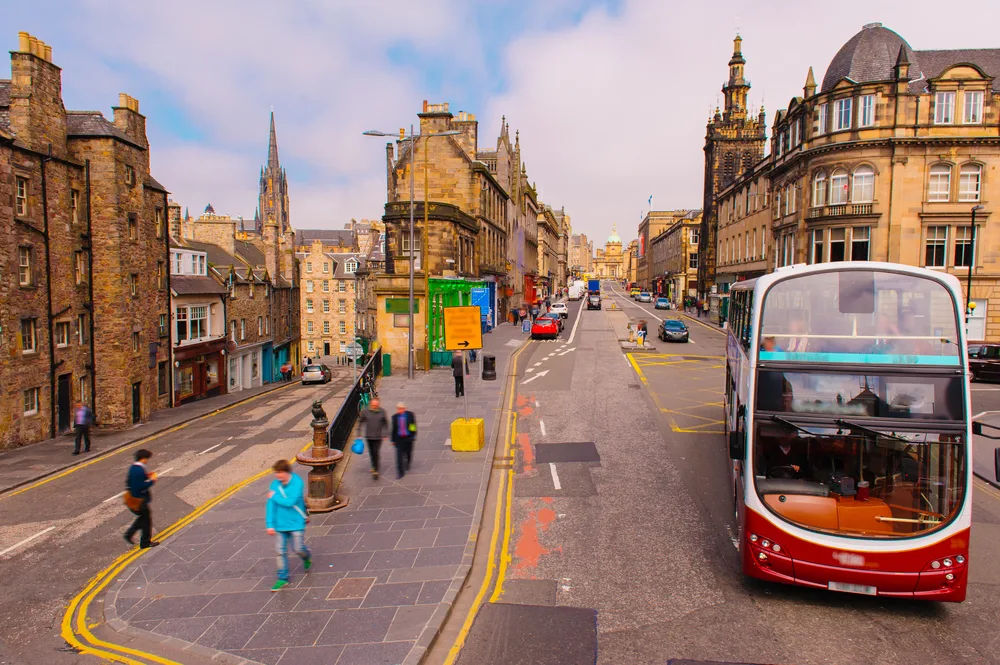
Richie Chan/Shutterstock
Yes, Scotland is a safe region to visit, so go ahead and plan your trip happily! The crime rate is average for UK standards and actually lower than many other places around the world with similar populations.
You may still need to watch out for petty crime in the cities and wild weather in the countryside, but with basic precautions, you won’t run into any bad incidents.
Since Scotland is part of the United Kingdom, you can look to travel advisories for the United Kingdom as advice on how to prepare yourself for travel to Scotland. Most countries, such as the United States, issue Level Two travel advisories for the United Kingdom.
That means that you can travel to parts of the United Kingdom, including Scotland, but you should take a few precautions to protect yourself.
The reason why the United States and other countries such as Australia advise visitors to exercise increased caution in the United Kingdom due to terrorism. Terrorism is the main risk factor for travel in the United Kingdom, at least judging from the travel advisories.
According to the British government, the national threat level for terrorism is substantial (level 3 out of 5).
Although Scotland is not the part of the United Kingdom that is most likely to be targeted by terrorist attacks (that would be Northern Ireland), there is a risk that an attack could happen.
There have been high-profile attacks before in Scotland, such as the 2007 Glasgow Airport bombing. However, this threat does not mean that you should cancel your trip altogether, it just means that you should be aware that there is some risk of a terrorist attack.
In its explanation of the terrorist alert system, the British intelligence service MI5 explains that no public response is needed, and the public doesn’t need to change their behavior.
The only precautions you may want to take is to follow the news for Scotland to see if the authorities raise the alert level at any time. Besides terrorism, crime is a risk in Scotland.
Crimes you may encounter include:
- Pickpocketing
- Bag snatching
- Scams
- Vehicle break-ins
- Alcohol-related crimes
- Gang violence
The crime rate differs widely from place to place in Scotland. Besides human factors, you should consider nature in mind when you visit Scotland and want to plan your trip safely.
The weather is infamously wild. The Canadian government even warns about the wind storms of Scotland in its travel advisory for the United Kingdom.
Check the weather forecast from the Met Office to see if there are storms predicted, especially if you are heading into nature. Even when storms aren’t happening, the weather can change several times over the course of a day.
Locals warn visitors to prepare accordingly and to take gear for all sorts of weather conditions when heading out for the day, especially a rain jacket or umbrella.
If you are exploring Scotland’s beautiful nature, make sure you take safety precautions if you are hiking or skiing. Always tell someone where you are going so they can alert the authorities if you are missing and call in the mountain rescue.
Take extra food, water, and a first aid kit with you so you are prepared in case you get stranded. If you are heading into the mountains, check the avalanche forecast, especially in the winter.
Although bad things can happen in Scotland, the vast majority of people who visit the country have only positive experiences. Some basic common sense is enough to keep you safe during your trip.
Crime in Scotland
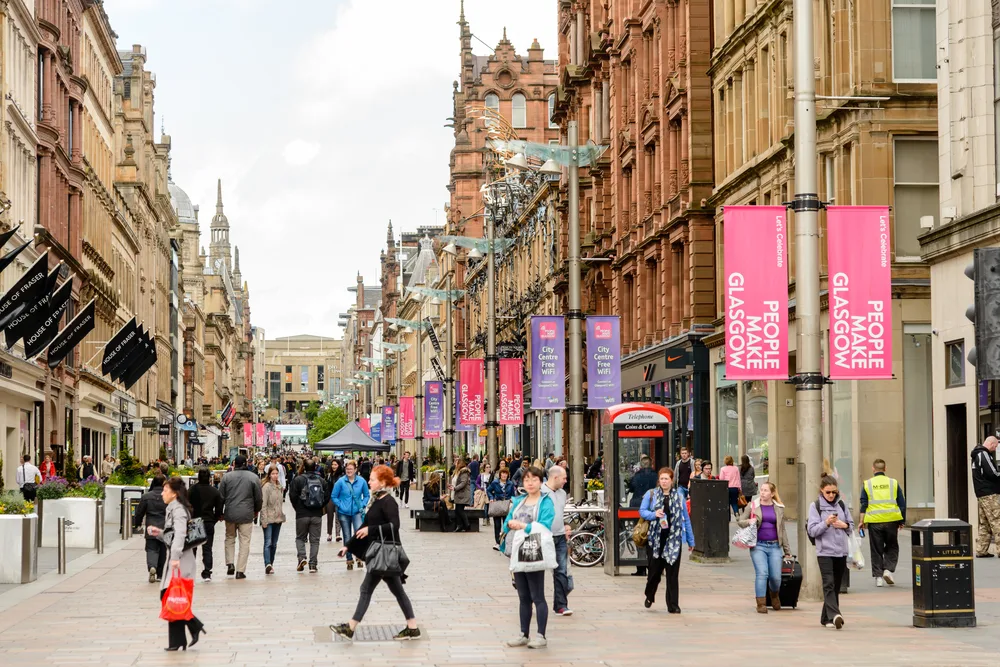
GLASGOW, SCOTLAND – JUNE 03, 2015 : View of Buchanan Street in Glasgow looking north./cornfield/Shutterstock
Crime is one of the primary concerns for visitors to Scotland. Like most areas in the world, Scotland experiences crime. It has a slightly elevated crime rate by UK standards, but a low crime rate by global standards.
The Scottish Government publishes official crime statistics that can give you an idea of what you might face when you visit. In 2022/2023, the Scottish police recorded 289,352 total crimes, which was a 1% increase compared to the previous year (an increase that is very low).
Violent crimes make up 23.8% of total crimes committed in Scotland. Violent crimes decreased slightly, by 1%. The most common violent crime in Scotland is assault, which makes up 84% of total violent crimes committed.
In most cases of assault, the victim and perpetrator knew each other or had some kind of relationship.
The most common crimes in Scotland are crimes of dishonesty, which make up 35.7% of total crimes committed. This is how the Scottish government categorizes property crimes such as burglaries, theft, and fraud.
The most common types of this crime are theft, making up 36% of the crimes of dishonesty total, shoplifting, which makes up 28% of the crimes of dishonesty total, and fraud, which makes up 16% of the total.
Crime in Scotland is fairly stratified by place. Most crime occurs in big cities such as Glasgow, Aberdeen, and Edinburgh, or certain high-crime regions in the country (more on those later).
Rural areas such as the Orkney Islands have extremely low crime rates. In fact, when traveling through rural parts of Scotland, it’s common to notice that locals leave their doors unlocked.
Scotland’s cities have a reputation for crime. Many people associate Edinburgh with the infamous film Trainspotting, which followed the lives of criminals and drug addicts.
Glasgow has long had a reputation for gang violence and high crime rates, giving rise to expressions such as the “Glasgow Smile.” However, in most of Scotland’s cities, the days of high crime and gangsters are long gone.
Crime rates in Scotland have been falling since the 1970s. Outside of a few pockets in certain neighborhoods or smaller cities, Scotland is a very safe place to visit.
Pickpocketing

Jacob Lund/Shutterstock
The most common crime in Scotland is theft, as shown by the crime statistics above. The type of theft that is most likely to affect visitors to Scotland is petty theft such as pickpocketing.
Petty theft mostly happens in big cities that are also popular among tourists, namely Glasgow and Edinburgh.
In Glasgow and Edinburgh, you should keep an eye on your valuables on public transportation (especially to and from the airport), around transportation hubs, and near popular tourist attractions.
In Edinburgh, be careful around the Royal Mile and during the Edinburgh Fringe, when there are lots of crowds in the city. In Glasgow, Barras Weekend Market is a pickpocket hotspot.
Usually, basic precautions are enough to deter thieves in Scotland. Make sure that you maintain physical control of your valuables at all times, instead of leaving them somewhere unattended or in a place where a pickpocket can easily access them.
When walking through crowded places, don’t put your phone in a back pocket or outer pocket of your backpack.
There are some scams targeting tourists in Scotland. Be careful of tour operators organizing outings for prices that are much cheaper than others. You may pay a deposit, only to show up and find out that the show doesn’t exist.
You should also be careful when buying tickets to events or shows, especially in Edinburgh, as unauthorized resellers sometimes sell fake tickets.
Gang-Related Violence
Scotland’s big cities have a reputation for gang-related violence. While the days of outright gang warfare are long gone, gang violence still plagues some parts of Scotland. Gangs are often responsible for violent crimes in Scottish cities.
A worrying trend shows that gang violence is increasing over the past few years. Gang violence is still a problem for many people in Scotland, and police are working on reducing violent crime levels again.
However, gang violence very rarely affects visitors to Scotland. Most gang members live in impoverished neighborhoods that tourists rarely visit. Their violence usually affects people around them or targets members of other gangs, not random passersby.
To protect yourself from gang violence, avoid neighborhoods with a reputation for violence (you can usually trust your instinct to notice which neighborhoods feel safe and which ones do not).
Avoid disputes that may escalate, such as drunken bar fights. You don’t want to get into any situation that may turn into violence.
Avoiding Bad Areas
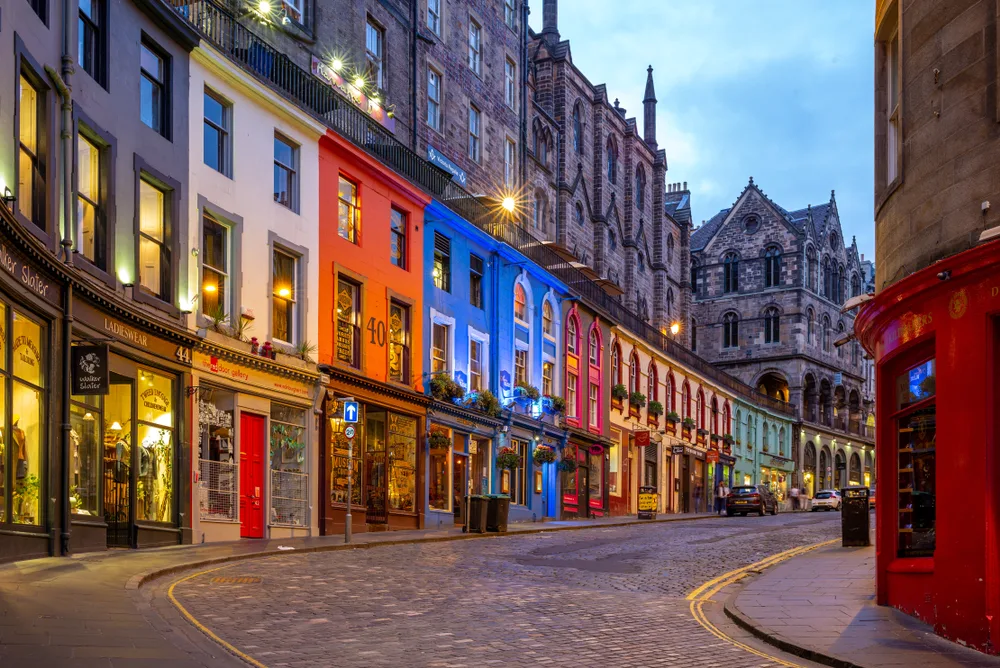
Edinburgh, UK – July 9, 2018: victoria street, built between 1829-34 as part of a series of improvements to the Old Town, with the aim of improving access around the city/Richie Chan/Shutterstock
Since crime in Scotland mostly happens in certain areas, knowing which areas to avoid is the most important thing you can do to keep yourself safe.
The city with the highest crime rate is not one of the big cities of Edinburgh or Glasgow, but Dundee City. If you visit, you should be careful while walking around. Edinburgh is fairly safe but has a few neighborhoods that you should avoid.
These include:
- The Meadows
- The red-light district (between Salamander Street and Leith Links)
- Lothian Road (only late at night)
- Leith Docks (at night)
Neighborhoods to avoid in Glasgow include:
- Possil
- Springburn
- Govan
- Drumchapel
Things to Consider
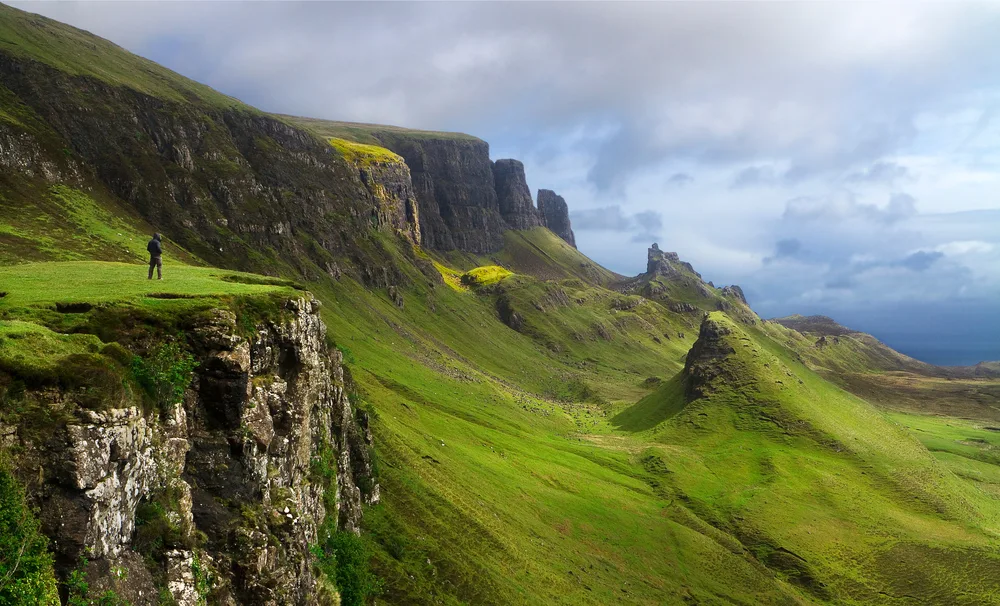
David Redondo/Shutterstock
Here are a few other safety tips for visiting Scotland:
- Beware of alcohol-related crimes. Scotland’s drinking culture is notoriously rowdy and the atmosphere at bars and clubs can get out of hand. Alcohol-related crimes, including bar fights, are fairly common. Try not to overindulge so you can get out of a situation that feels unsafe. If you’re not drinking, avoid popular nightlife areas such as Dairy Road in Edinburgh at night.
- Adapt to the local culture. In rural areas, it’s polite to say hello to everyone that you run into and to make small talk if necessary. Some remote areas of Scotland are very religious, and all businesses are closed on Sundays.
- Get into nature safely. Scotland has strong right to roam and wild camping laws but check local laws before pitching your tent. Give wild animals such as deer a respectful distance as they can easily become aggressive.
Frequently Asked Questions

Alena Popova/Shutterstock
Here are a few common questions people have asked before visiting Scotland:
Is Scotland friendly to tourists?
Yes, Scotland is friendly to tourists and has well-developed tourist infrastructure. Scottish people are reserved but friendly and welcoming.
What is the safest area in Scotland?
The safest areas in Scotland in terms of crime are rural, remote areas such as the Orkney Islands and the Shetland Islands. In these areas, people don’t even lock their homes or cars.
Is Ireland or Scotland safer?
Both Ireland and Scotland are very safe areas. The Republic of Ireland is safer than Scotland and has a lower crime rate. However, Northern Ireland is more dangerous than Scotland because of the high terrorist threat.
Is it safe to travel alone as a woman in Scotland?
Scotland is very safe for solo female travelers! However, you should take common sense precautions such as only checking out the clubs with a buddy and not walking down dark alleyways alone at night.
What should I know before going to Scotland?
The thing people regret not knowing before going to Scotland is usually the weather. Make sure that you are prepared for all kinds of weather, from rain to hail to sunny days, as it is fairly unpredictable.
Over to You — Book Your Trip to Scotland Today!
With common-sense precautions, Scotland is safe to visit. The country has a fairly low crime rate, especially in rural areas. You are most in danger of getting rained on.
So, with so much to see and do, what are you waiting for — book your trip today and experience for yourself all that Scotland has to offer. Happy travels!



